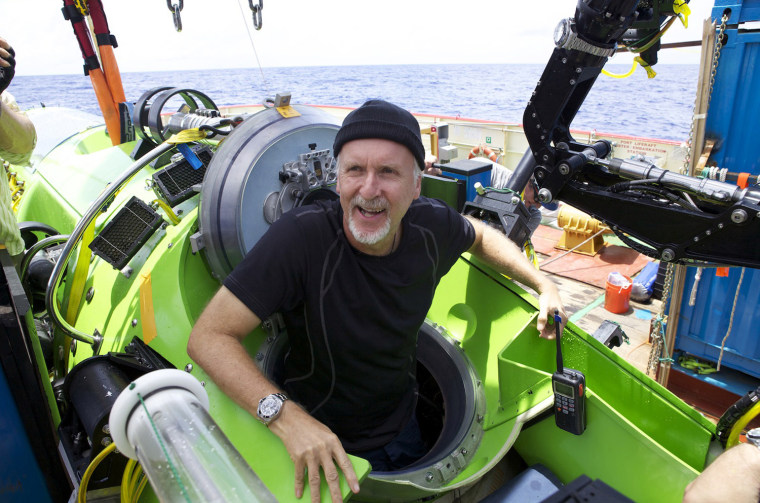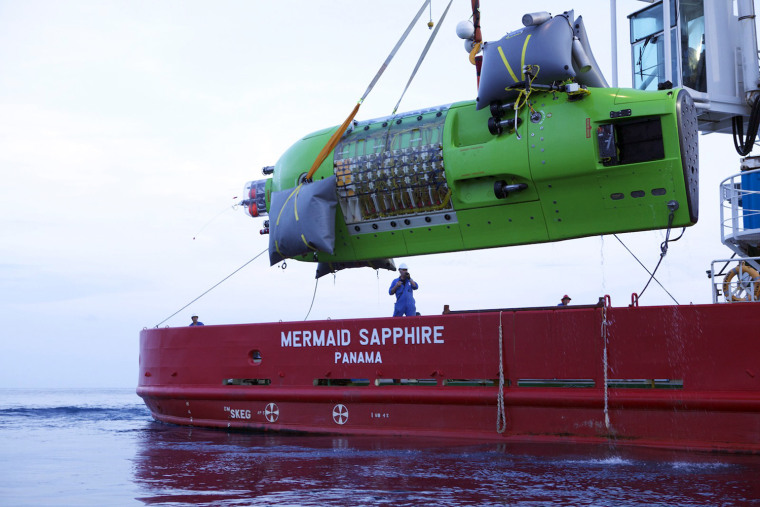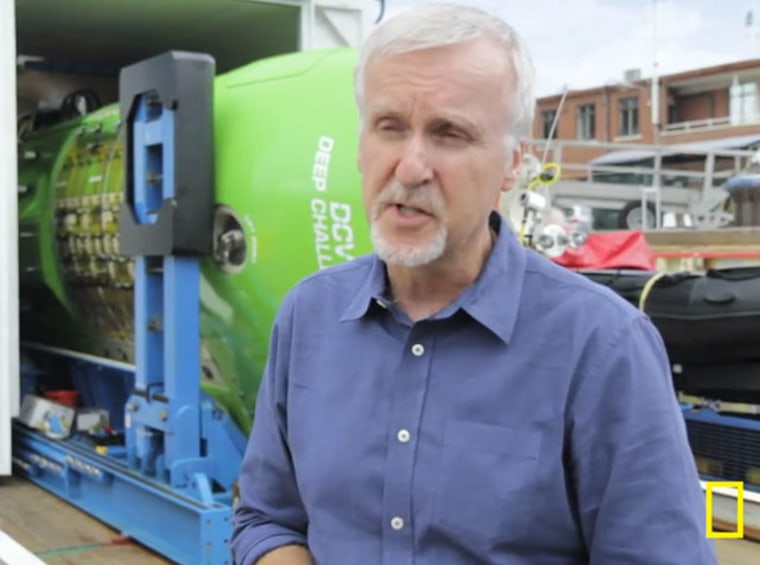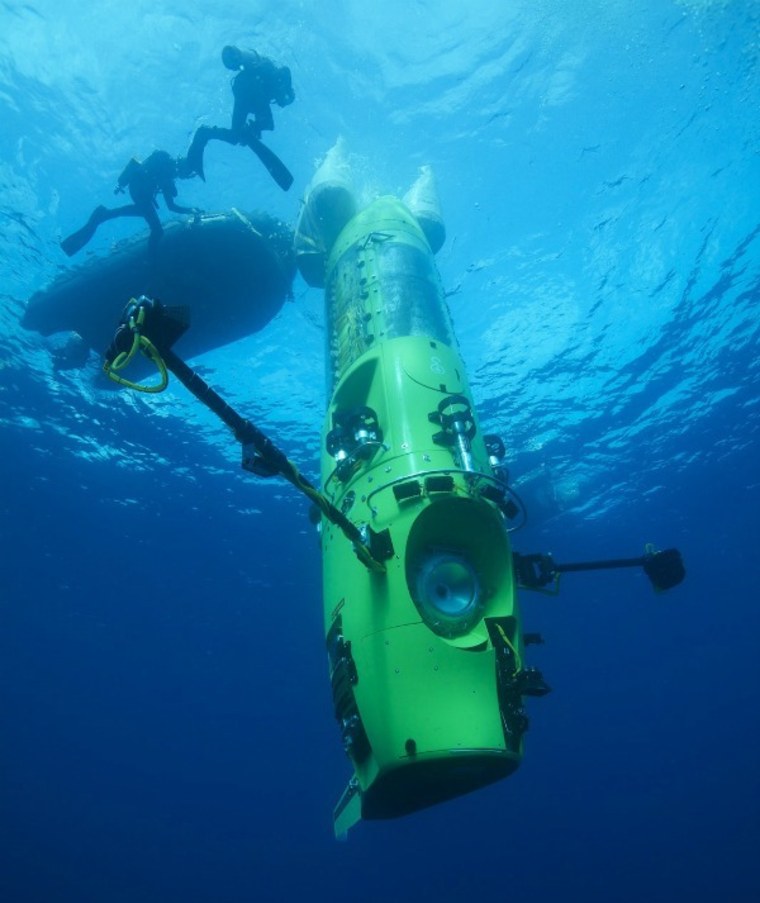Director James Cameron reached the Earth's deepest point and returned, in a seven-hour solo journey to explore a place only two men have gone before.
"Just arrived at the ocean's deepest pt. Hitting bottom never felt so good. Can't wait to share what I'm seeing w/ you," tweeted the director of "Titanic" and "Avatar," from his state-of-the-art diving vessel Deepsea Challenger, when he reached his target.
Cameron used a specially designed submarine to descend nearly seven miles to the bottom of the Mariana Trench, an area 200 miles southwest of the Pacific island of Guam.
He began the dive Monday at approximately 5:15 a.m. local time (early Sunday afternoon on the U.S. East Coast), according Stephanie Montgomery of the National Geographic Society, where Cameron is an explorer-in-residence. National Geographic set up a website documenting the dive challenge.

"RELEASE, RELEASE, RELEASE!" were the last words Cameron uttered before beginning the dive, according to a Twitter post from the expedition.
Cameron touched the bottom after a 2-hour-and-36-minute descent, then studied the ocean floor for several hours before making his 70-minute ascent back to the surface, according to National Geographic's own report.
Billionaire Paul Allen had been following the dive action from a helicopter while monitoring Cameron's communications via special underwater radio technology. Allen kept followers updated via his Twitter feed. "Sub now deeper than everest at 32160 speed 2.0 knots not long to seabead now," wrote Allen, shortly before Cameron touched the bottom.

As Cameron's Deepsea Challenger emerged, at 12 noon local time (10 p.m. Eastern Time), Allen wrote "#deepseachallenge has surfaced, now for recovery..." A short while later, he reported, "Saw James Cameron Emerge from #Deepseachallenge sub and wave back at us as we flew over in the Octopus Helo...safe and sound!"
Allen posted several pictures of the capsule in the water, and then one showing the capsule being hauled onto its support ship.
The scale of the trench is hard to grasp — it's 120 times larger than the Grand Canyon and more than a mile deeper than Mount Everest is tall (hence Allen's "Everest" remark). Once Cameron reached the bottom aboard his 12-ton, lime-green sub, he planned to collect samples for biologists and geologists to study.
There's considerable wiggle room built in, however, as the submarine Cameron helped design has the capability to support life for a 56-hour dive.
The first and only time anyone dove to these depths was in 1960. Swiss engineer Jacques Piccard and U.S. Navy Capt. Don Walsh took nearly five hours to reach the bottom and stayed just 20 minutes. They didn't have much to report on what they saw there, however, because their submarine kicked up so much sand from the ocean floor they couldn't see much.
One of the risks of a dive so deep is extreme water pressure. At 6.8 miles below the surface, the pressure is the equivalent of three SUVs sitting on your toe.

Cameron told The Associated Press in an interview after a 5.1 mile-deep practice run near Papua New Guinea earlier this month that the pressure "is in the back of your mind." The submarine would implode in an instant if it leaked, he said.
But while he was a little apprehensive beforehand, he wasn't scared or nervous while underwater.
"When you are actually on the dive you have to trust the engineering was done right," he said.
The latest dive site, which is at the deepest point in the Mariana Trench, is named Challenger Deep after the British naval vessel HMS Challenger that used sound to first measure its depth.
The film director has been an oceanography enthusiast since childhood and has made 72 deep-sea submersible dives. Thirty-three of those dives have been to the wreckage of the Titanic, the subject of his 1997 hit film.
The Associated Press contributed to this article.
